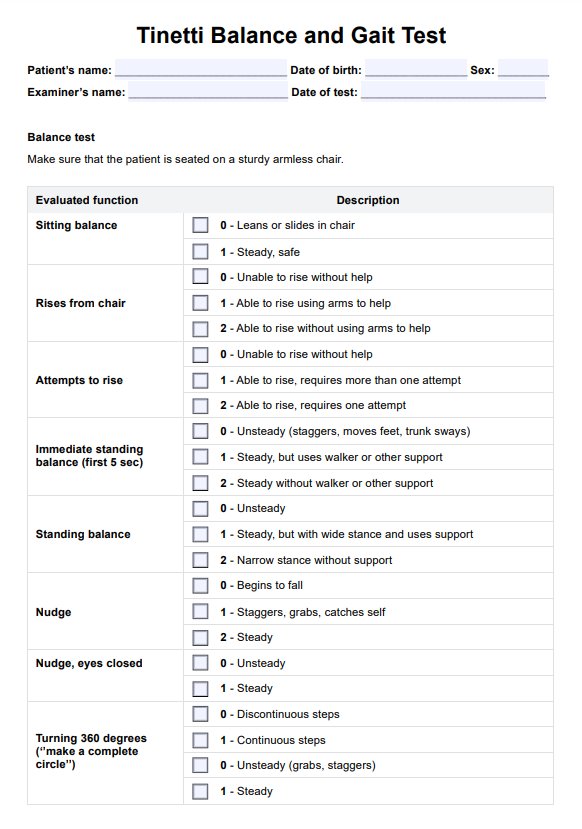Ideally, yes. But if you'd rather do it via house call, you must ensure that there's a sturdy armless chair for the first test and enough space in the patient's abode for the second test. Just don't forget to bring tape (or something that can be used to mark a 15-meter distance) and a yardstick so you can properly administer the second part of the test.

Tinetti Balance Test
Assess your elderly patient’s risk of falling by having them take the Tinetti Balance Test! See how they fare with standing up from an armless chair and measure their gait to get a sense of their risk of falling!
Tinetti Balance Test Template
Commonly asked questions
It is relatively safe. Since this is primarily administered to elderly patients, there is a chance that they might fall while doing the test, but the therapist conducting the test should be there to make sure that nothing terrible happens. They will always be by the patient's side for both tests, so it's best to trust the therapist.
If you work with people with a high risk of falls (such as community-dwelling older adults), then it's best to have them take this test as soon as possible. This will allow you to gauge their risk of falling while standing up or walking. It doesn't have to be a one-time thing, either. You should administer this test multiple times to arrive at a more informed conclusion.
EHR and practice management software
Get started for free
*No credit card required
Free
$0/usd
Unlimited clients
Telehealth
1GB of storage
Client portal text
Automated billing and online payments











